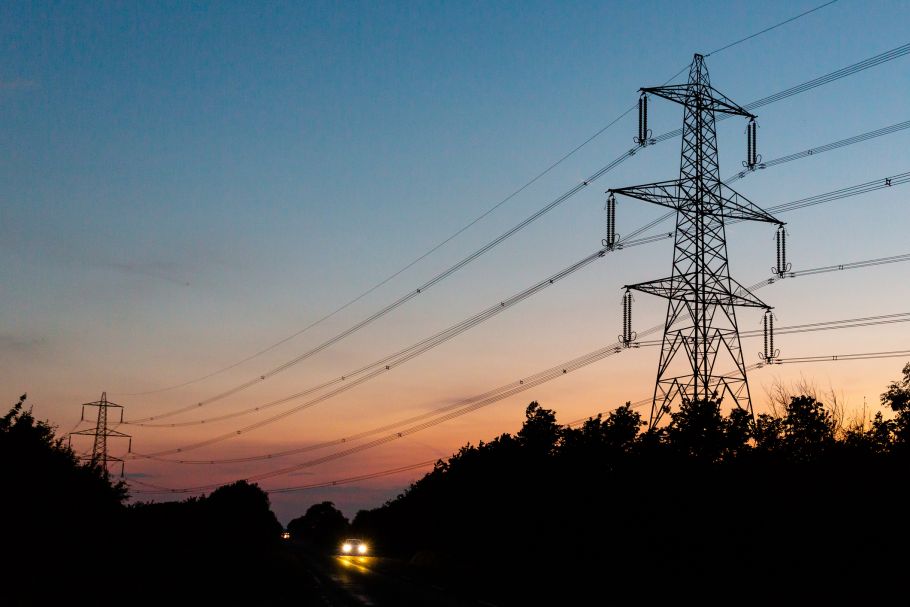
Contributors: Paul Young, Colin Bathgate
Date published: 1 July 2024
The impact of UK General Election 2024 on the energy sector: policies, developers, and investors
Introduction
The UK general campaign is now in full swing. All the major parties have published their respective manifestos, and the energy sector is discussed (to varying degrees).
As energy security has been thrust into the political spotlight in recent years, the level of attention paid by parties during this year’s campaign is greater than in previous elections.
That said, this should not come as a surprise to observers of the sector, where net zero and associated clean energy and decarbonisation technologies have become something of a political battleground in recent years.
As recently as 15 May, Energy Security Secretary Claire Coutinho announced in Parliament that the planning system in England and Wales needed reform to protect prime agricultural land from development for solar projects in light of global challenges to food security.
The Association of Renewable and Clean Energy Technology (“REA”) responded to this announcement, pointing out that if all planned solar projects in the UK were to be constructed, the land mass taken up by these projects would be less than the total area currently used for golf courses in the UK. The REA also noted that the biggest risk to food security in the UK is climate change.
With energy being a political hot potato in the 2024 election, how will each political party’s policies affect developers and investors?
The Labour Party
Labour’s main objective for the energy industry is to make the UK a ‘clean energy superpower’.
Labour acknowledges that net zero represents “a huge opportunity to generate growth” and the party will seek to work with the private sector to boost the number of projects completed. In particular, the party will seek to double onshore wind, triple solar power and quadruple offshore wind by 2030.
While these targets will undoubtedly be welcome news to the renewables sector, some industry commentators have questioned whether such targets, particularly those for offshore wind, are achievable. Quadrupling the current offshore capacity would mean a total generating capacity of 56GW, yet there is no detail as to how this target will be achieved.
The main policy announcement concerning the energy sector by Labour is the establishment of Great British Energy (“GB Energy”) – a publicly-owned clean energy company, which will work with the private sector across a range of technologies and strengthen the existing supply chain. To date, there has been little detail about how GB Energy would operate in practice and the intended interface with other public sector bodies involved in the sector.
Alongside these commitments, Labour also intends to invest in carbon capture and storage and hydrogen, extend the life of existing nuclear facilities, invest in small modular nuclear reactors (“SMRs”) and increase grid capacity by reforming the energy system. Importantly for oil and gas, Labour has ruled out any new oil licenses in the North Sea, but has pledged not to overturn existing licences.
The Conservative Party
Energy security is the main theme for the Conservatives, with significant focus on the measures taken in the last parliament.
For the renewables sector, offshore wind is the big winner, with a pledge to treble existing offshore capacity by 2030, meaning that the UK would have 50GW of offshore wind by 2030 under Conservative plans. However, like Labour, how this would be achieved is not specified. This is a commitment previously set out by then Prime Minister Boris Johnson in 2019, which many in the industry called unrealistic.
The Conservative plan to cut grid connection times will also be welcome news for the renewables industry.
Additionally, the Conservatives have also maintained a commitment to reaching net zero by 2050. In terms of other energy technologies, the Conservatives have included proposals for annual oil and gas licensing rounds, two SMRs to be approved in the first 100 days in office and the proposal for a new nuclear plant in North Wales.
Claire Coutinho’s proposal on solar planning, noted above, is also included in the manifesto, as is a plan to build new gas power stations “for days when the weather doesn’t power up renewables.”
The Scottish National Party (SNP)
The SNP manifesto addresses the need for reform of the grid, the Contracts for Difference mechanism (“CfD”), and the planning system, all areas for which renewable developers have been calling for reform.
How these areas will be reformed is not expanded on, however the SNP does call for these areas to be devolved to the Scottish government. The party also calls for devolution for energy regulation, pricing and production.
Also of interest to developers, will be the commitment to explore opportunities for and promote Scotland’s hydrogen potential.
Nuclear power has been ruled out by the SNP in the manifesto and the party has promised a £500 million fund to facilitate a just transition for the North East and Moray, which it requires the UK government to match.
Contrary to Labour’s position, the SNP states that they are not opposed to new North Sea oil and gas licences, however, will use an evidence-based approach to determine whether or not to grant such licences. Commentators have noted that this is not so much a policy proposal, but rather continuing with the existing practice.
The Liberal Democrat Party
The Liberal Democrats make one of the largest commitments in any of the manifestos, by seeking generate 90% of the UK’s electricity coming from renewable sources by 2030.
The party’s manifesto includes support for the widest variety of renewable technologies. This includes investment in green hydrogen, tidal and wave technologies, pumped storage and battery. The party also pledges to build more international interconnecting cables to import and export green electricity. The Liberal Democrats will also remove existing Conservative planning restrictions on wind and solar construction and will aim to reduce grid connection times.
There is particular attention given to small-scale renewables. Specifically, community renewable developments will receive financial support and there will be new incentives for households to install rooftop solar panels.
While these measures will be welcomed by the sector, exactly how this will equate to reaching the 90% target is not specifically addressed.
Reform UK
Despite Reform UK being the party most opposed to the renewables sector, the party’s manifesto (or Contract) contains the least detail compared with the major parties.
Reform UK argues that net zero commitments are unaffordable, damage British industry and make the country less secure. They argue that removing net zero policies would save the UK £30 billion per year for the next 25 years. The party will also scrap £10 billion of renewable subsidies; however, it is not clear whether this is part of the £30 billion per year saving.
In terms of energy generation, Reform UK will fast-track North Sea oil and gas licences and grant fracking licences on a two-year test basis. In the longer term, SMRs built in the UK are key to Reform UK’s proposals. Clean coal mining will also be incentivised, as will combined gas turbines.
From a renewables perspective, the manifesto states that they will support tidal power and incentivise ethical lithium mining in the UK, something of interest for the battery storage sector.
The Green Party
Unsurprisingly, some of the most detailed and far-reaching proposals in relation to renewables come from the Green Party.
In terms of non-renewable sources of energy, the Greens pledge to grant no new oil and gas licenses, end all subsidies to the oil and gas sector, cancel new projects such as the Rosebank oil and gas field, introduce a carbon tax and not construct any new nuclear facilities.
Turning to renewable energy, the big focus from the Greens is community-owned renewable projects. While not explicitly stated, it appears that the Greens will seek to use the success that Scottish community projects have had in recent years, as a blueprint to roll out across the UK.
For large renewables investors, there will be statements in the manifesto that may well cause concern. For example, the party will seek to ensure communities profit from energy resources and state that it would be a failure from government if energy infrastructure was held in private hands.
However, once the detail is drilled down into, collaboration with the private sector will be unavoidable. The Green’s targets include 80GW of offshore wind, 53GW of onshore wind and 100GW of solar by 2035. To reach these targets, pledges include increasing the CfD strike price, making massive investment in the grid including new interconnectors and grid-level storage, transforming the planning system to allow more onshore wind and bringing the crown estate into public ownership to enable more offshore wind projects.
What will be particularly welcomed by the sector are commitments to construct new port capacity and support supply chains in relation to offshore wind.
Conclusion
On 5 July, the outlook for the energy sector could be vastly different, depending on the party of government.
From the perspective of a renewables developer or investor, the recognition of the sector’s potential by the Labour Party will likely be appealing. As will Labour’s commitment to work with the private sector, while increasing grid capacity.
That said, there is little detail on exactly what GB Energy is, which may lead to concerns as to whether it might be a competitor to existing players in an already tight market. For the nuclear sector, the commitment to investment in SMRs will be welcome, however, there is little focus given to oil and gas.
Commitments by the Conservative Party regarding offshore wind and the grid will be welcomed by the renewables sector, albeit there is little detail on how these will be achieved, with more attention being given to the nuclear and oil and gas sectors, which will undoubtedly be welcomed by players in these industries.
As for the SNP, while it appears they have listened to the renewables sector regarding the issues projects are facing, such as CfD etc, the suggested political answer of further devolution without details of what this will look like may raise further questions. By ruling out new nuclear development in Scotland, the nuclear sector will not view these proposals in a positive light. However sticking with the status quo for oil and gas will be reassuring for those in that sector.
Commitments tabled by the Liberal Democrats are bold and cover the full range of renewable technologies, but their proposals don’t offer much for those in offshore wind, nuclear or oil and gas. Additionally, large-scale deployment of small technology is the approach taken by this party, which is unlikely to attract the large-scale investment required to bring about the significant increase in capacity needed to meet their 2030 target.
Reform UK offers the least to the renewables industry and threatens its very existence in the UK, (despite the UK energy market being world-leading), while conversely offering significant support for the nuclear and oil and gas sectors.
Finally, the Greens offer wholehearted support for the renewables sector – not an unexpected position for them to take. While there will be welcome statements by the Greens concerning floating wind and port capacity, the main focus is on community projects. Predictably, Green proposals for nuclear and oil and gas are diametrically opposed to those in the Reform UK manifesto and would likely spell the end of these industries in the UK.
Regardless of what happens on 4 July, the sector is in for significant change.
Contributors:
Colin Bathgate
Senior Solicitor
To find out more contact us here
Sectors: Clean Energy, Energy and Natural Resources, Oil and Gas
















